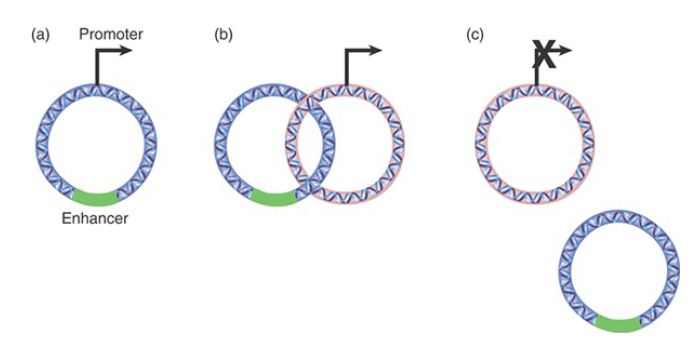x

هدف البحث
بحث في العناوين
بحث في المحتوى
بحث في اسماء الكتب
بحث في اسماء المؤلفين

اختر القسم
موافق


النبات

مواضيع عامة في علم النبات

الجذور - السيقان - الأوراق

النباتات الوعائية واللاوعائية

البذور (مغطاة البذور - عاريات البذور)

الطحالب

النباتات الطبية


الحيوان

مواضيع عامة في علم الحيوان

علم التشريح

التنوع الإحيائي

البايلوجيا الخلوية


الأحياء المجهرية

البكتيريا

الفطريات

الطفيليات

الفايروسات


علم الأمراض

الاورام

الامراض الوراثية

الامراض المناعية

الامراض المدارية

اضطرابات الدورة الدموية

مواضيع عامة في علم الامراض

الحشرات


التقانة الإحيائية

مواضيع عامة في التقانة الإحيائية


التقنية الحيوية المكروبية

التقنية الحيوية والميكروبات

الفعاليات الحيوية

وراثة الاحياء المجهرية

تصنيف الاحياء المجهرية

الاحياء المجهرية في الطبيعة

أيض الاجهاد

التقنية الحيوية والبيئة

التقنية الحيوية والطب

التقنية الحيوية والزراعة

التقنية الحيوية والصناعة

التقنية الحيوية والطاقة

البحار والطحالب الصغيرة

عزل البروتين

هندسة الجينات


التقنية الحياتية النانوية

مفاهيم التقنية الحيوية النانوية

التراكيب النانوية والمجاهر المستخدمة في رؤيتها

تصنيع وتخليق المواد النانوية

تطبيقات التقنية النانوية والحيوية النانوية

الرقائق والمتحسسات الحيوية

المصفوفات المجهرية وحاسوب الدنا

اللقاحات

البيئة والتلوث


علم الأجنة

اعضاء التكاثر وتشكل الاعراس

الاخصاب

التشطر

العصيبة وتشكل الجسيدات

تشكل اللواحق الجنينية

تكون المعيدة وظهور الطبقات الجنينية

مقدمة لعلم الاجنة


الأحياء الجزيئي

مواضيع عامة في الاحياء الجزيئي


علم وظائف الأعضاء


الغدد

مواضيع عامة في الغدد

الغدد الصم و هرموناتها

الجسم تحت السريري

الغدة النخامية

الغدة الكظرية

الغدة التناسلية

الغدة الدرقية والجار الدرقية

الغدة البنكرياسية

الغدة الصنوبرية

مواضيع عامة في علم وظائف الاعضاء

الخلية الحيوانية

الجهاز العصبي

أعضاء الحس

الجهاز العضلي

السوائل الجسمية

الجهاز الدوري والليمف

الجهاز التنفسي

الجهاز الهضمي

الجهاز البولي


المضادات الحيوية

مواضيع عامة في المضادات الحيوية

مضادات البكتيريا

مضادات الفطريات

مضادات الطفيليات

مضادات الفايروسات

علم الخلية

الوراثة

الأحياء العامة

المناعة

التحليلات المرضية

الكيمياء الحيوية

مواضيع متنوعة أخرى

الانزيمات
Enhancers Work by Increasing the Concentration of Activators Near the Promoter
المؤلف:
JOCELYN E. KREBS, ELLIOTT S. GOLDSTEIN and STEPHEN T. KILPATRICK
المصدر:
LEWIN’S GENES XII
الجزء والصفحة:
8-5-2021
1098
Enhancers Work by Increasing the Concentration of Activators Near the Promoter
KEY CONCEPTS
- Enhancers usually work only in cis configuration with a target promoter.
- The principle is that an enhancer works in any situation in which it is constrained to be in the same proximity as the promoter.
Enhancers function by binding combinations of transcription factors, either positive or negative, that control the promoter and, by extension, gene expression. The promoter is the site where, in open chromatin, basal transcription factors prebind so that RNA polymerase can find the promoter. How can an enhancer stimulate initiation at a promoter that can be located any distance away on either side of it?
Enhancer function involves interaction with the basal apparatus at the core promoter element. Enhancers are modular, like promoters. Some elements are found in both long-range enhancers and enhancers near promoters. Some individual elements found near promoters share with distal enhancers the ability to function at variable distance and in either orientation. Thus, the distinction between long-range and short-range enhancers is blurred.
The essential role of the enhancer may be to increase the concentration of activator in the vicinity of the promoter (vicinity in this sense being a relative term) in cis. Numerous experiments have demonstrated that the level of gene expression (i.e., the rate of transcription) is proportional to the net number of activator-binding sites. Typically, the more activators bound at an enhancer site, the higher the level of expression.
The Xenopus laevis ribosomal RNA enhancer is able to stimulate transcription from its RNA polymerase I promoter. This stimulation is relatively independent of location and is able to function when removed from the chromosome and placed with its promoter on a circular plasmid. Stimulation does not occur when the enhancer and promoter are on separated plasmids, but when the enhancer is placed on a plasmid that is catenated (interlocked) with a second plasmid that contains the promoter, initiation is almost as effective as when the enhancer and promoter are on the same circular molecule, as shown in FIGURE 1 (even though, in this case, the enhancer is acting on its promoter in trans). Again, this suggests that the critical feature is localization of the protein bound at the enhancer, which increases the enhancer’s chance of contacting a protein bound at the promoter.

FIGURE 1. An enhancer may function by bringing proteins into the vicinity of the promoter. An enhancer and promoter on separate circular DNAs do not interact as in (c), but can interact when the two molecules are catenated as in (b).
If proteins bound at an enhancer several kilobytes distant from a promoter interact directly with proteins bound in the vicinity of the start point, the organization of DNA must be flexible enough to allow the enhancer and promoter to be closely located. This requires the intervening DNA to be extruded as a large “loop.” Such loops have now been directly observed in the case of enhancers. What limits the activity of an enhancer? Typically it works upon the nearest promoter. In some situations an enhancer is located between two promoters, but activates only one of them on the basis of specific protein–protein contacts between the complexes bound at the two elements. The action of an enhancer may be limited by an insulator—an element in DNA that prevents the enhancer from acting on promoters beyond the insulator .